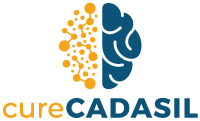If you or someone you care about has been affected by a CADASIL diagnosis, you may have many questions you need answered. Read through our list of Frequently Asked Questions below, or consult your physician with any additional concerns.
The diagnosis of CADASIL is made by a physician, usually a neurologist, based on family history, signs and symptoms of disease, Magnetic Resonance Imaging (MRI) and genetic testing with a sample of blood analyzed in a certified laboratory. If someone wishes to know if they have the genetic mutation that can cause CADASIL, it is best to see a physician and to have not only genetic testing, if it is indicated, but also genetic counselling when the test result becomes available.
It is important when getting tested for CADASIL to also have genetic counseling to interpret the results. One of the ways to undergo testing and receive counseling from a qualified genetic counselor, is to participate in a study that includes genetic testing. The CADASIL Consortium Study, for example, is enrolling participants who are at risk to develop CADASIL because they may have inherited the CADASIL mutation from a relative with the disease. The CADASIL Consortium Study will also help with expenses to travel to a study site for testing. There is also a study called All of Us that is located in most major University Medical Centers. You can sign up and find out where the nearest participating program is located. Visits for this study usually only take about one half day. If testing shows the presence of CADASIL, or any other disease, they offer free genetic counseling.
There is currently no known cure for CADASIL. Nor is there a specific treatment directed at the cause of CADASIL per se. However, some evidence suggests that vascular disease risk factors can make CADASIL worse, and therefore it makes sense to avoid cigarette smoking, treat high blood pressure, treat elevated low density lipoprotein (so-called “bad”) cholesterol, follow a heart-healthy diet, maintain a healthy body weight, and get plenty of exercise. Whether taking low dose aspirin is effective is not known. All of this is best managed with the advice of a physician.
CADASIL progresses erratically and unpredictably. Published articles and word of mouth tend to emphasize cases that are extreme. However, many if not most patients with CADASIL do well and manage to live independently for a normal or near-normal lifespan.
There are many ways to reach out and find support from other patients and care givers. Participate in a study! Or, if possible, attend a meeting that is designed to bring people whose lives are affected by CADASIL together. The United Leukodystrophy Foundation (ULF) sponsors an annual Family meeting that cureCADASIL has participated in. Participating in a fund-raiser can be another way to meet and network with people; CureCADASIL participates in the annual Million Dollar Bike Ride, for example.
Many patients and care-givers find support on social media. Social media can be helpful, but advice on social media is unfiltered, and care should be used, especially when it comes to interpreting advice about taking medications, home remedies or supplements. It is important to consult with a health care provider, preferably a physician, before taking anything recommended by someone who is not a health care professional.
There are many opportunities to help. Participate in one or more of several ongoing research projects; Do not hesitate to contact the organizers of these projects to see if this is something that you can do. Fund raise; It goes without saying that it takes money to organize and fund research to find a cure. Volunteer. cureCADASIL is always eager to find volunteers, especially people with experience in areas that may help in the research and education that cureCADASIL provides. Do not hesitate to contact us if you have time to help out.
Yes, and investigators are always looking for clues from the experience of other investigators in other diseases. For example, CADASIL is caused by mutations in a single gene. It is at least theoretically possible to correct this genetic abnormality and cure the disease. We are not there yet, but research to block or correct genetic mutations in one disease can lead to very similar approaches in other diseases, and cures for other genetic diseases are being found at an increasingly rapid pace. So hang on and stay tuned!
A nutraceutical (combining the words “nutrition” and “pharmaceutical”) is a food or dietary supplement that provides health benefits in addition to its nutritional value. There is no regulation of dietary supplements and vitamins in the United States, and companies make a lot of money selling these products with no evidence that they are effective. However, there is no reason (other than cost and lack of motivation) that a company cannot perform a randomized, controlled trial to see if a particular product can help people with CADASIL. Indeed, there has been such a trial in France, studying the efficacy and safety of “tocotrienols” in CADASIL. This study was sponsored by the Malaysian company, Hovid. As of April 2024, results of this trial have not been made available.
In non-CADASIL patients it has been shown that tissue plasminogen activators can reduce the damage caused by strokes due to blood clots, if treatment is started soon after symptoms begin. Strokes caused by bleeding, however, can be made worse by this treatment. Patients with CADASIL often have small bleeds in their brain tissue, and whether tissue plasminogen activators should be used in CADASIL patients with strokes is not known.
Studies that do not administer treatments, so-call “observational studies”, are very safe. Risks, such as the risk of blood drawing, are usually small. One risk in any medical study is the risk of failing to maintain privacy. There are many ways that a study participant’s identity can be accidentally revealed, and great care is generally taken to prevent this from happening.
Studies of treatments have risks attributable the particular treatment being given. The amount of risk varies greatly, and knowing the risk depends on how often the treatment has been used before in humans with CADASIL or other disorders. Treatments that are already approved by regulatory bodies, such as the U.S. Food and Drug Administration, are likely to have detailed information on risks. Studies that compare treatment to a placebo (a harmless “dummy” treatment or procedure), also have the risk that a participant in the study may not receive the intervention that is being studied.
MRI does not expose the body to radiation. Instead, MRI uses rapidly changing magnetic fields, radio waves, and a computer to obtain detailed images.
Objects with metal parts that are implanted somewhere within the body can prohibit someone from undergoing an MRI. Things that may prevent an MRI from being done include: cardiac devices such as pacemakers, metal objects placed in the eye, neurostimulation devices, ear implants, drug infusion pumps such as pumps delivering insulin or pain relief medications, metal fragments such as bullets, shotgun pellets, and metal shrapnel, and objects used to replace bones and joints such as an artificial hip replacement. Be sure to tell caregivers who are planning an MRI if you have any foreign tissue implanted in your body. Also, some patients may not be able to receive the gadolinium that is often used to enhance imaging with an MRI.
Sometimes it is good to repeat tests and procedures to confirm that the results are consistent, and therefore reliable in different populations and individuals. Tests that are repeated in different studies may increase the likelihood that the results are not due to chance; If two studies show the same result, the result is more likely to be valid than if only one of two studies show the result. Also, the results of studies may change over time, for example as participants age, and it may be wise to repeat tests that have not been done for awhile.
Nevertheless, there is an ongoing effort for studies to share information that does not need to be collected again. For example, a high-quality MRI done for one study may not need to be repeated in another study if the result is not likely to have changed.
Trials that compare treatment to no treatment or placebo are needed to prove that a treatment works; these trials must designate the measurement that is being compared between the two groups before the trial begins. This can be disease-causing events such as a strokes or migraine headaches, or it can be a blood test that reliably predicts who is at risk for these disease-causing events.
Observational studies are needed to identify measurements that will be useful in treatment trials before those trials can be carried out. Observational studies to determine how often these events occur, and what tests reliably predict outcomes that matter to patients, are needed to correctly design the treatment trials. They are also needed to determine how many participants need to be enrolled in a treatment trial to determine if the treatment works.
Finally, in order to do a treatment trial, a treatment that is likely to be effective needs to be found in studies that do not involve humans or in human studies that suggest but do not prove that the treatment is effective.
If you have CADASIL, there is a 50% chance that your child will inherit the CADASIL gene mutation from you (see CADASIL Diagnosis and Testing). There are ways that this can be avoided, and good advice can be found in a “toolkit” from Global Genes (FAIR3 Family-Planning-and-Considerations.pdf (globalgenes.org). If adoption is not a choice or an option, then one other option may be in vitro fertilization with pre-implantation genetic testing and selection of an embryo that does not have the CADASIL mutation. However, personal preferences, financial constraints, and local availability may affect decision-making. For more information, see CADASIL Diagnosis and Testing.

